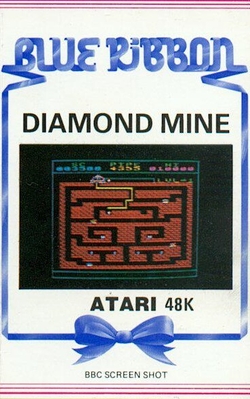This article needs additional citations for verification .(November 2025) |
| Diamond Mine | |
|---|---|
 | |
| Developer | Mike Williams |
| Publishers | MRM Software Blue Ribbon |
| Platforms | Acorn Electron, Amstrad CPC, Atari 8-bit, BBC Micro, Commodore 16/Plus/4 |
| Release | 1984 |
| Genre | Maze |
| Mode | Single-player |
Diamond Mine is a maze video game first published by MRM Software for the Acorn Electron and BBC Micro home computers in 1984. Diamond Mine was reissued by Blue Ribbon in 1985 and ported to other systems in 1985 and 1986. [1] Blue Ribbon released a sequel, Diamond Mine II, at the same time. Both games are similar to the 1983 game Oil's Well , which itself is a re-themed version of the 1982 Anteater arcade video game.

